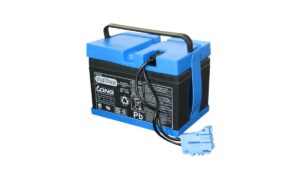Battery storage and solar are great ways to ditch utility bills and become energy independent – but are batteries eligible for the solar tax credit?
As a result of the signing of the Inflation Reduction Act, the 30% Residential Clean Energy Credit became immediately effective. The credit is applicable to the cost of solar equipment and labor, as well as battery storage.
For battery projects installed in 2022 and 2032, this new and improved tax credit remains at 30%.
Take a look at how this incentive works and how it can be applied to solar or battery installations.
It is recommended that you consult a CPA or tax advisor before filing any tax return. This article is for informational purposes only.
Is the new solar tax credit applicable to batteries?
Certainly. It has been a roller coaster ride waiting for a climate bill that would expand solar and battery incentives, but now it is here and battery storage definitely qualifies for the 30% federal tax credit, along with solar, wind, geothermal heat pumps, and fuel cells.
On August 16, 2022, the Inflation Reduction Act (IRA) was signed into law; Section 13302 addresses the Residential Clean Energy Credit for “qualified battery storage technology expenditures”.
For solar and battery equipment “placed in service” after December 31, 2021 and before January 1, 2033, the IRA amended the schedule for the previous tax credit to remain at 30%.
Residential Clean Energy Credits of 30% are available immediately and retroactively for solar and battery storage installed in 2022. As a result, you will be able to claim a 30% federal tax credit for any purchase of solar or battery storage in 2022.
Does All Battery Storage Qualify for the Federal Tax Credit?
Clearly, solar battery storage is eligible for a 30% tax credit, but what exactly qualifies as a “qualified battery storage technology expenditure?”
Battery storage must meet the following criteria to qualify for the 30% tax credit:
-
The taxpayer uses the dwelling unit as a residence in the United States.
-
“At least 3 kilowatt hours of capacity.”
Since solar tax credits are calculated according to kilowatt-hours, the 3 kilowatt-hour minimum battery capacity won’t take effect until 2023. Since most battery installations are closer to 10kWh, most batteries will easily exceed the minimum amount.
The federal tax credit for battery storage doesn’t have a maximum size, price, or eligibility requirements. Bigger isn’t always better – so let’s see how it works.
Is the Residential Clean Energy Credit available for standalone batteries?
As of January 1, 2023, standalone battery storage (batteries that are not connected to solar panels) will also be eligible for the 30% Residential Clean Energy Credit.
The standalone battery is a great alternative to a gas generator for homeowners who frequently experience power outages due to natural disasters and Public Safety Power Shutoffs.
Additionally, a standalone battery can assist you in saving money by storing electricity when the cost is more affordable. Time-of-Use (TOU) rates change the price of electricity throughout the day. During peak demand (typically in the morning and evening), the price of electricity can significantly increase. It is possible to experience a price difference between peak and off-peak periods of 25 cents per kilowatt-hour — approximately $2.50 cents per day — in some instances. Storage batteries can be used to shift grid usage from high- to low-cost periods, resulting in substantial savings.
Is it possible to get the tax credit for battery if I used it for solar already?
The IRS and Department of Energy have not yet issued guidance on the matter, but it appears homeowners who add battery storage to existing solar systems can claim the Residential Clean Energy Credit.
In 2023, you can add battery storage if you purchase solar in 2022 and claim the tax credit for it.
Solar battery storage and the federal tax credit
You can use the Residential Clean Energy Credit to reduce your federal tax liability, but it is not refundable.
You can use the tax credit to reduce your federal tax liability beginning in the same tax year that your battery was installed and deemed operational by a government inspector. Not a check in the mail.
Here are some examples:
Case 1: Your Tax Liability Exceeds Your Tax Credit
If you spend $50,000 on solar and batteries in 2022, you can claim a $15,000 tax credit. However, when tax season rolls around, you have $17,000 in tax liability, which can be reduced to $2,000 by using the full $15,000 credit at once.
Case 2: Your Tax Credit Exceeds Your Tax Liability
It is possible to buy the same system as above and receive the same $15k tax credit. However, in this case, you only owe $8,000 in taxes. The $8,000 tax liability can be reduced by utilizing the Residential Clean Energy Credit, and the remaining $7,000 can be carried over.
As of right now, the Residential Clean Energy Credit can be carried forward for as long as it remains active, which is until December 31, 2032.
This article is intended for informational purposes only. Please consult your CPA or tax advisor before filing any tax returns.
Is Solar Battery Storage Necessary?
You might be wondering if you need a battery. Truth be told, it depends on your situation.
There are many reasons why homeowners get solar systems, and a battery adds a lot of value. The primary benefit is having a reserve of energy to power your home during blackouts and Planned Safety Power Shutoffs (PSPS), which are becoming more common as extreme weather events increase in frequency and intensity.



































